Two main categories of respirators are atmosphere-supplying and air-purifying:
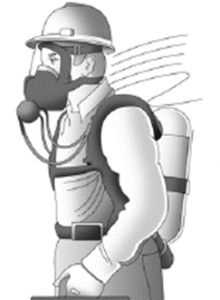 Atmosphere-supplying respirators provide clean, breathable air from an uncontaminated source. Atmosphere-supplying respirators include air-line respirators and the self-contained breathing apparatus (SCBA). Air-line respirators deliver breathing air through a hose. The source of air can be either from a compressor or a compressed air cylinder that is not carried by the user. SCBAs deliver air from a source that the user carries with them, such as a compressed air tank (see figure top right) or escape bottle.
Atmosphere-supplying respirators provide clean, breathable air from an uncontaminated source. Atmosphere-supplying respirators include air-line respirators and the self-contained breathing apparatus (SCBA). Air-line respirators deliver breathing air through a hose. The source of air can be either from a compressor or a compressed air cylinder that is not carried by the user. SCBAs deliver air from a source that the user carries with them, such as a compressed air tank (see figure top right) or escape bottle.
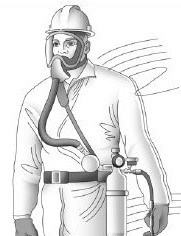 In very specific pesticide uses, such as when using phosphide fumigants in enclosed areas, the environment may be immediately dangerous to life and health (IDLH). In these cases, the only kind of respirators that may be used are either a pressure-demand SCBA with a full facepiece, or a pressure-demand full facepiece air-line respirator with an SCBA-escape bottle (see figure directly to left). These respirators have a built-in backup to allow escape without having to remove the respirator (figures adapted from the OSHA Small Entity Compliance Guide for the Respiratory Protection Standard).
In very specific pesticide uses, such as when using phosphide fumigants in enclosed areas, the environment may be immediately dangerous to life and health (IDLH). In these cases, the only kind of respirators that may be used are either a pressure-demand SCBA with a full facepiece, or a pressure-demand full facepiece air-line respirator with an SCBA-escape bottle (see figure directly to left). These respirators have a built-in backup to allow escape without having to remove the respirator (figures adapted from the OSHA Small Entity Compliance Guide for the Respiratory Protection Standard).
Air-purifying respirators remove contaminants from the air that you breathe. These respirators do not supply oxygen and should never be used in an environment that has limited oxygen (< 19.5%) or is immediately dangerous to life or health. Air-purifying respirators may be either non-powered or powered.
Another way to classify air-purifying respirators is by whether they require a seal between the respirator, face, and/or neck to provide protection. Respirators can be classified as tight-fitting or loose-fitting:
Tight-fitting respirators must have a tight seal between the respirator facemask and the user’s face and/or neck. Examples of tight-fitting respirators are particulate filter masks, full face masks, and half-masks. If the seal leaks, contaminated air is pulled into the facepiece and inhaled. All non-powered air-purifying respirators (APRs) have tight-fitting facepieces that seal directly to your face. These facepieces include particulate filtering facepiece respirators (FFR), half masks, and full facepiece masks. They may be designed for single-use or with replaceable purifying elements.
Facial hair such as a beard or stubble that could interfere with the seal of tight-fitting respirators is not permitted. Piercings, stray hair, and clothing may also interfere with the seal. For the Worker Protection Standard, a fit test must be performed for any tight-fitting respirator at least every 12 months to make sure that the facepiece makes a tight seal. Situations such as weight gain, weight loss, or dental work that might affect the seal trigger the need for another fit test.
A loose-fitting respirator does not depend on a tight seal with the face to provide protection. These are options for those who have facial hair, or those who cannot find a respirator that provides a tight seal. Loose fitting respirators do not need to be fit tested. Powered air-purifying respirators (PAPRs) use a blower to pass contaminated air through replaceable purifying elements. PAPRs are available with tight-fitting facepieces, or loose-fitting helmets or hoods.
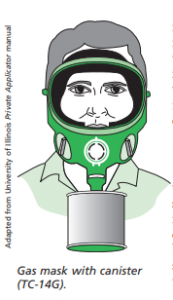 |
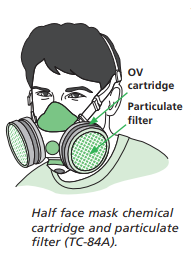 |
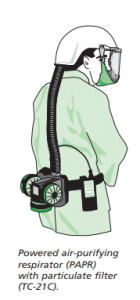 |
| Three examples of air-purifying respirators are illustrated above. The gas mask (left) and half-face mask (center) are tight-fitting respirators while the particular PAPR illustrated on the right is loose-fitting. The ‘TC’ followed by numbers and letters are NIOSH designations. See TC Numbers and Cartridge Colors for a complete list.
Source: Respiratory Protection for Occupational Users of Pesticides. Patricia D. |
||
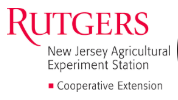 Hastings, Coordinator, Rutgers Pesticide Safety Education Program.
Hastings, Coordinator, Rutgers Pesticide Safety Education Program.